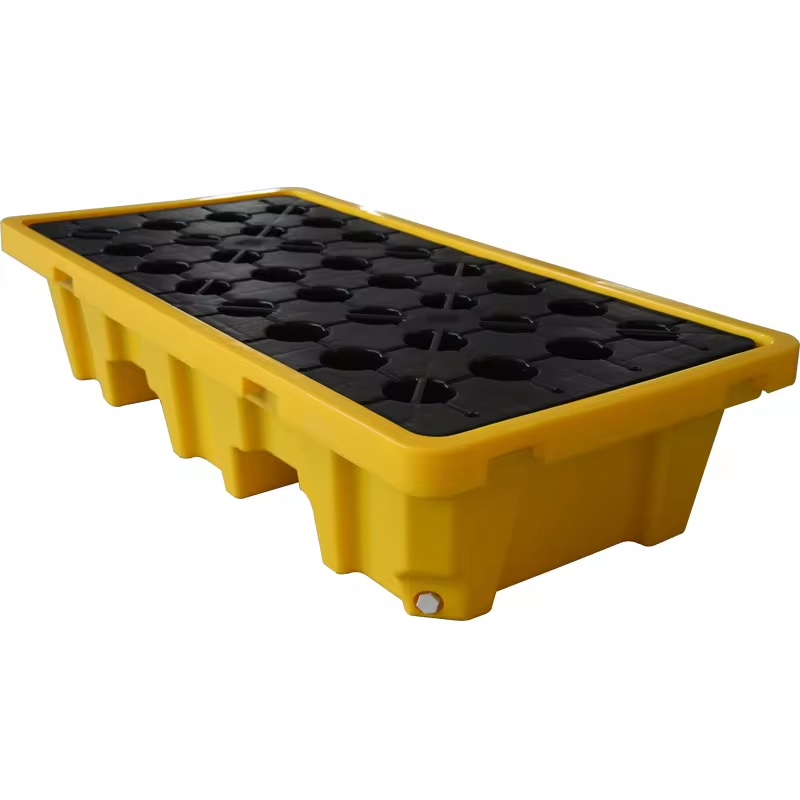What Is the Standard for Spill Containment?
Spill control is a process that involves catching one or more Harmful and corrosive likely substances to spill out of a container or a storage tank. Some of the reasons why spill containment is necessary are: Since it is impossible to prevent the occurrence of Spill Pallet, it is best to contain them in some way since they pose security risks, harm the environment, and violate many laws. In the following passage of Enlightening Pallet field guide on the basics of environmental spill control, we will explain the standard of spill containment, why it is beneficial, and how it is employed.

Advantages of Spill Containment
First and foremost, it is crucial to highlight the fact that the use of spill containment offers significant benefits in terms of safeguarding human health. They may happen at the workplace, on a road or even at a home at any given time and can be caused by many reasons. With the help of the spill containment system, any particular product will be trapped before causing more damages.
This calls for spill benefited containment with the following factors: It can pose harms to the environment such as polluting the soil, well water or even surface water if a leakage occurs. These are some of the negative effects of oil spills on the environment and show how Spill Kits can assist in controlling the negative effects as well as cutting the cost and time incurred on the cleansing process.
Innovation in Spill Containment
As the concern over efficiency of the equipments increases especially in safety and ways of protecting environment, then there has been advancements which have been experienced in the spill containment industry in the recent past. Some of the latest innovations include:Some of the latest innovations include:
1. Spill containment berms that are used as an additional protection layer that automatically covers any leaking pipes or tanks.
2. The following are: Flexible spill containment systems provided in the form of easily roll up units that can be re-used repeatedly.
3. Sensors that have the capability to identify a leakage and shut off the flow before a large spillage is noticed.
4. The following are the advantages of the products: Adaptability, this means that the products can be made to fit the perimeter of any type and size of container or storage tank.
Safety and Use of Spill Containment
It is easy to apply the use of spill containment, and there are diverse forms of spill containment devices available. The most common types of spill containment are:The most common types of spill containment are:
1. Secondary containment – shallow and passive receiver systems that cost a little bit of money and are easy to install but can capture minor spills.
2. Secondary containment – large bulk barriers within which containers of chemicals are stored; also called spill pallets.
3. Spill berms – They can be easily installed as enclosures around containers or any other storage area.
4. Spill kits–mobile kits with all the necessary tools that are required for the cleaning of a small amount of spillage.
When larger accidents have occurred, the containment system is usually at industrial standard. These are usually specially constructed and may consist of the berm systems, liners or other secondary containment facilities.
Service and Quality
Thus it can be noted that the quality factor plays a very crucial role in spill Eyewash Station systems. There are several points which should be taken into consideration before deciding on a particular type of spill containment system including its designed endurance, chemical compatibility, and simplicity of use.
However, service delivery is a key component for success in any organization. Most of the manufacturers provide services of installation and maintenance once installed to ensure they are working as required. Some of these services include surveys, training in handling equipment as well as planning and practicing on emergent situations.
Application of Spill Containment
Antibacterial resistance in various industries is needed in many forms of business, such as manufacturing and transportations, agriculture and health care. Some specific applications of spill containment include:Some specific applications of spill containment include:
1. Chemical storage and transportation – dangerous substances possess a high risk of leakage or spillage during transport hence they must be stored and transported in containers that have zero chances of allowing spillage.
2. Oil and gas industry – the use of spill barriers may be crucial during the operation of drilling, production, and transportation of the oil and gas.
3. Medical – anti-spill as guard against the transmission and spread of disease and sickness.
4. Cropping – containment is applied to pesticides and fertilizers in storage and application to avoid water and ground pollution.

